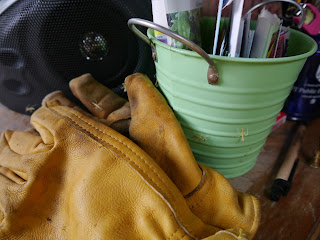Wednesday, June 8, 2016
Tale of Two Wasps
TOP: Giant Ichneumon Wasp
BOTTOM: Horntail Wasp Larva
A few days ago a neighbor offered us some free wood, most of which needed to be split. I have never been known to reject free wood, no matter how much work has to be done to get it ready for the fireplace. So, there I was, pounding a star wedge into a chunk of maple with a sledgehammer, when the wood yielded to the efforts and cleaved in two. To my amazement, in one of the larva chambers bisecting the pieces, a Giant Ichneumon wasp emerged. I've seen them in the wild many times, but never encountered one while splitting wood, probably because I usually split wood in the fall as opposed to late spring. I immediately went in the house to grab a camera to document it.
After photographing the wasp, I began to more closely examine the wood, and found that there was an intact Horntail wasp larva still in its chamber, feasting on the wood. The complete developmental cycle of these two very different wasps! The female horntail uses an ovipositor to bore into the wood to insert her egg within, where the growing larva consumes the wood, creating a trail. Meanwhile, the ichneumon wasp uses her antenna to listen for the horntail larva chomping and moving, and when she finds one, uses her even longer ovipositor to pierce the exterior of the wood and inject her egg into the horntail larva, which it then consumes. Clearly the ichneumon is a parasitic wasp, but then so is the horntail.
Fascinating!
Friday, June 3, 2016
Baby Mantises
Mantis Babies, Pittsburgh, 2016
This has been a big week mantises, what with the egg case hatching at my house this morning (outisde, on the porch), but also with The Notorious Ruth Bader Ginsberg having the honor of a new species of mantis being named for her. You go, RBG!
The mantis young that emerged from the hardened egg case this morning completed a cycle started last fall when their father bravely mated with their mother. Males typically encounter a 25% mortality rate while or following mating as the female will bite off his head given the opportunity. Sexual cannibalism is common in the insect kingdom as it gives the mother the added protein she needs for optimizing her eggs. It seems crazy, but what about procreating doesn't come across as bizarre, particularly to someone outside the species. Who am I to judge the head eating mantises? The abies are adorable, miniatures of the adults, smartly avoiding the awkward adolescent stage that most insects are forced to endure.
Wednesday, June 1, 2016
17 Years And Hello Again
17 Year Cicada, Pittsburgh, PA 2016
It's been awhile since the constant buzz of millions of cicadas filled the air, while the insects themselves filled every available space. It's been 17 years to be exact. If you're familiar with the original Star Trek television show, then you know what a phaser set to overload sounds like. That's exactly what millions of cicadas sound like. After their extended stay pupating underground, feasting on the roots of deciduous trees, they emerge en masse to mate, and to be eaten. Birds go crazy to feed on these protein rich bugs, and to share the bounty with their hatchlings. I've seen robins so fat they can barely take wing. I'm just trying to keep the dog away from them because she'll gorge herself until she vomits. Who needs to clean up that mess?
It's been awhile since the constant buzz of millions of cicadas filled the air, while the insects themselves filled every available space. It's been 17 years to be exact. If you're familiar with the original Star Trek television show, then you know what a phaser set to overload sounds like. That's exactly what millions of cicadas sound like. After their extended stay pupating underground, feasting on the roots of deciduous trees, they emerge en masse to mate, and to be eaten. Birds go crazy to feed on these protein rich bugs, and to share the bounty with their hatchlings. I've seen robins so fat they can barely take wing. I'm just trying to keep the dog away from them because she'll gorge herself until she vomits. Who needs to clean up that mess?
Subscribe to:
Posts (Atom)










